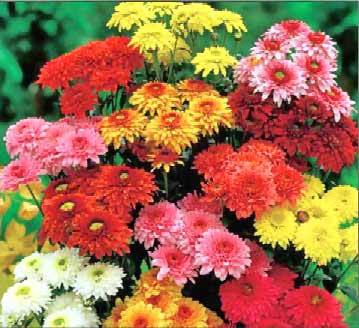|
First-Generation Pesticides-
First-generation pesticides were primarily used prior to 1940 and consisted
of inorganic and organic compounds.
Minerals such as arsenic, mercury, and lead are inorganic compounds and were used as early pesticides. These minerals,
when used as pesticides, posed a problem, because they did not degrade in the environment. The minerals persist and accumulate
in the soil until the levels become so high, that the land is unfertile.

Organic compounds were created from plants, and pesticides used the plants developed resistance
to insects. These organic compounds are known as botanicals. Pesticides such as pyrethrin come from chrysanthemum flowers.
Rotenone is isolated from jewel vine and nicotine is found in tobacco. Unlike Inorganic compounds, botanicals do degrade in
the environment and do not persist. However, these pesticides are highly toxic to other organisms such as fish and bees. Synthetic botanicals
were also produced as first-generation pesticides. They are created chemically to mimic the structure of plant produced botanicals.
Pyrethoid, similar to the botanical version of pyrethrin, was an important synthetic botanical because it did not persist
in the environment.

Second-Generation Pesticides-
Second-generation
pesticides differ from earlier pesticides, in which they are created synthetically. They began to be used in the 1940s after
Paul Müller discovered DDT in 1939. The three most common groups of second-generation pesticides are Chlorinated hydrocarbons,
Organophosphates, and Carbamates. These groups are known as insecticides. Each group displays different properties. Some insecticides
are persistent while others break down and do not bioacummulate. Their toxicity to mammals also fluctuates between insecticides.

Examples of Second Generation Pesticides-
Chlorinated hydrocarbons
-DDT
-Methoxychlor
-Lindane
-Endosulfan
Organophosphates
-Methamidophos
-Dimethoate
-Malothion
Carbamates -Aldicarb
-Carbaryl
|
